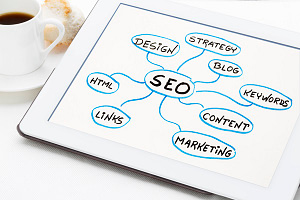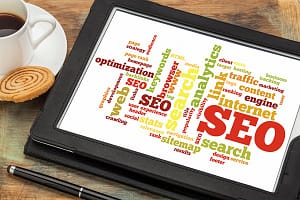In a market economy with ferocious competition amongst business firms, recognising the significance of potential customers and coming up with long-standing strategies to take care of this segment has been a measure for most successful B2B businesses. However, despite experts acknowledging the importance of lead generation, only a fraction of B2Bs have an effective plan for lead generation marketing campaigns.
Following the current market needs, lead generation is seen as one of the most efficient ways of attracting and developing relationships with customers, thereby helping businesses grow. Today, with the rapid development of new technologies and marketing strategies, businesses have new means to reach customers faster and more rapidly.
This succinct post is all about this. Start growing your lead base right away with these B2B lead generation tactics and expert tips.
1. Email marketing
Email marketing may seem like one of the oldest forms of lead generation, but it still reigns supreme when it comes to usage and attracting new potential customers. Sure, today there are a lot of newer communication platforms such as live chat and social media, but with a user base of more than four billion people, email is still the leader among marketing channels.
Email remains one of the most direct and effective ways of connecting with your potential leads, nurturing them, and eventually turning them into long-term customers.
But, when it comes to email marketing, you need to come out on top against your rivals. So many B2B sales and marketing teams are still very reliant on cold email prospecting to generate meetings, which makes it harder to catch the attention of many B2B customers.
As such, you need to make use of professional, tech-driven email outreach campaigns that are designed to stand out against the noise and generate high-quality business meetings in your niche.
The power of technology is now allowing lead-generation mavens to test messages, boost performance, and deliver emails directly to your potential customers’ inboxes instead of their spam.
A successful cold email tactic is one where your emails are not only read by your prospects, but you also receive some replies as part of your campaign. The messages are normally not solicited and will typically include useful content, link back to your site, and/or other valuable resources to attract the attention of your buyer.
2. Cold calling
Despite the fact that in the past, poorly trained marketers and pushy salespeople tarnished the image of cold calling, it’s still one of the most effective tools for lead generation. In fact, according to recent marketing research by MarketingSherpa, 92 percent of B2B buyers are open to cold calls if the marketer is relevant.
As Mark Twain puts it, rumours about the death of cold calling are massively exaggerated. It’s up to you as a business firm to update and finesse your call calling tactics to ensure you are using all the resources available to you to build rapport and make meaningful connections.
According to a leading lead generation company, SalesHive, cold calling is still one of the fastest ways of getting direct prospect feedback to optimise your pitch and marketing strategy. The goal is to allow your reps to focus on one thing and one thing only – making dials to book meetings.
To be effective in cold calling, it is recommended that you outsource cold calling specialists who are qualified to ensure every rep is trained in best practices for B2B sales development. Such reps are always dedicated to your account, certifying that they are more comfortable with your market to consistently book meetings with your prospects.
3. LinkedIn
Going by the word from LinkedIn, “quality leads come from a quality audience.” Four out of five LinkedIn members drive business decisions. The platform also has two times the buying power of an average web audience.
While most B2M marketers and salespeople understand such statistics, most have been struggling with lead generation on LinkedIn. Some use the platform as an inbound marketing platform, where they attempt to attract prospects via paid ads and organic posts. Others use it to merely send cold messages and connection requests.
But with everyone trying this, smart marketers are now using tried and tested strategies that can guarantee better conversion rates. For instance, to establish a strong presence on the platform, you need to consistently share industry-relevant content that adds value to your prospects.
This can help create a strong authority of your firm in the industry, and you’ll ultimately get registered in the minds of your potential clients.
You can also optimise both your LinkedIn personal profile and that of your business. By doing this, you will ensure that your LinkedIn company page is compelling and ready to generate leads for your business. Through your personal LinkedIn profile, you can also push the strength and versatility of your company.
4. Content marketing
Content marketing is certainly a popular and effective solution when done right. That’s because, like consumers, business firms also want to equip themselves with the right info before a big buy. For the most effective content marketing, choose a digital marketing agency that has serviced other businesses in your industry. For example, a car dealership should choose an agency that offers specifically automotive content marketing services rather than one that just offers general content marketing.
Based on the Demand Gen Report on B2B marketing, approximately 47 percent of buyers read about three or five pieces of copy before considering contacting a sales rep. Gartner also estimated that more than 65 percent of sales decisions happen before making any contact with a supplier.
So, you can go on with ongoing SEO campaigns with B2B content marketing support to generate meaningful leads. It aligns perfectly with your intentions by offering first-rate content that educates prospects and gets them sucked in into your lead generation funnel.
You can do this in a variety of ways. For example, you can start by understanding how keywords attract different types of users. Keyword use will drive different types of people to your website, so it is vital to understand each set.
For instance, transaction keywords such as cheap, affordable, best, new, or latest attract users with buying intent, while informational keywords, such as product, service, guide, attract people intending to find information.
You can also make sure you integrate your content with lead magnets. These are free resources such as whitepapers, courses, or e-books that you offer your visitors in exchange for their information.
5. Conversion rate optimisation
Lastly, you also need to optimise your conversion rate. It doesn’t matter how much traffic you’re generating on your websites and other linked platforms if you aren’t converting them into leads.
Start by testing different variations of your page content to determine the most convincing message. Do the same with your Call to Action – test different variations and observe which has the greatest influence.
You can then proceed by making use of heat maps to isolate any kind of conversion barriers on your page. These are essential CRO features that show you where users click, scroll, stop, and move their mouse to reveal their navigation. This can help you discover UX as well as conversion barriers.
Other strategies that can help your B2B optimise conversion rate include exit-intent pop-ups, optimisation of web forms, and creating targeted landing pages, among others.






Leave a Comment